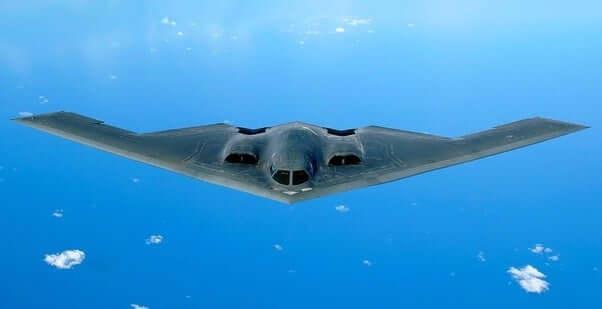Military stealth technology, while not entirely useless, may not be as effective as the US military initially believed. During the Gulf War, the debut of US stealth technology came as a surprise to Soviet leaders, who were impressed by its effectiveness. American F-117 aircraft could infiltrate deep behind Iraqi lines and bomb targets with little resistance.
Throughout the war, F-117s conducted night after night of bombing runs, targeting command and control centers in Baghdad, air defense installations across the country, and strategic infrastructure such as bridges and power plants that were guarded by some of Iraq’s most advanced air defenses. In total, F-117s flew 1,300 sorties and attacked 40% of the strategic targets in the Gulf War.
Lockheed F-117
However, it is important to note that stealth aircraft like the Lockheed F-117 are only optimized against specific frequencies. In the past, missiles used high-resolution radars with wavelengths measured in centimeters and millimeters (known as the SHF and EHF bands, respectively) to target stealth aircraft. These frequencies are better at estimating the speed and location of non-stealth targets, allowing them to guide missiles more accurately. As a result, stealth aircraft are designed to be difficult to detect by radar operating in these bands.

Upon the conclusion of the Gulf War, the Russians/Soviets began working on countermeasures to US stealth technology. They quickly realized that stealth aircraft were not as effective against radar operating in the VHF and UHF bands, with wavelengths measured in meters or decimeters. Modern stealth aircraft use honeycomb structures in the skin to trap radar waves, but these longer wavelength radars produce beams that are too long to be trapped by these structures. Additionally, they tend to resonate off of defining features on the aircraft, such as the engine inlets or vertical or horizontal stabilizers, creating a large radar return that can be easily detected.
The US Air Force retired the F-117 in April 2008, replacing it with the F-22 Raptor. Despite its retirement, a portion of the F-117 fleet has been kept in operational condition, and sightings of the aircraft have been reported as recently as 2020.
Nebo VHF-band AESA Radar Used in the S-400
Traditionally, radar technology has been limited by poor resolution in the UHF and VHF bands, making it difficult to track targets accurately at distances greater than a few hundred meters. This made them ineffective for guiding missiles. However, with the advancement of computer technology and signal processing techniques, UHF and VHF radars have become more precise in determining an aircraft’s location. As a result, they are now more suitable for missile guidance.
One example of this advancement is the Russian Nebo VHF-band radar, which is used in the S-400 system. It can provide a high-quality track of a target or at least guide a missile equipped with an infrared seeker to within range of its target. This technology has made it so that aircraft like the F-117, which were successful in missions like Desert Storm, would likely not be able to survive in modern warfare.
E-2D Advanced Hawkeye

Despite this, stealth technology is not entirely useless. The Nebo radar used in the S-400 system is quite large and would not be practical to install on most aircraft, except for certain specialized planes like the Northrop Grumman E-2D AWACS and the Russian Beriev A-100. The E-2D utilizes a UHF-band radar that has demonstrated the ability to guide SM-6 missiles.
However, these larger radars are not suitable for most fighter jets, which are typically limited to using SHF and VHF band radars. These radars require multiple antennas to track targets effectively, and the length of each antenna must correspond to the wavelength it emits. It is not feasible for fighter jets to carry numerous antennas several meters long.
N036L-1-01 L-band AESA Radar
Despite this, modern Russian fighters such as the Su-35 and Su-57 are equipped with L-band radars mounted on their wingtips that are thought to have some ability to detect stealth aircraft. The L-band is on the shorter end of the UHF band, with wavelengths ranging from 15 to 30 cm. These radars should be able to detect defining features of stealth fighters like the F-22 and F-35, such as engine inlets, by resonating off of them.

Northrop Grumman B-2 Spirit
On the other hand, it is more challenging to detect larger aircraft, such as the US B-2, which has more extended defining features. The Northrop Grumman B-2 Spirit has a leading edge approximately 33 meters in length, which means it could only be detected by radar with a wavelength of at least 3.3 meters, placing it in the VHF band.
In recent years, the Russian Federation has put several powerful Voronezh radars into operation in the VHF band, which are believed to be capable of tracking a B-2. However, these radars are not designed to guide weapons but to identify targets approaching airspace. They could be used to vector fighter jets to intercept B-2s, though. The B-2 is relatively slow and unmaneuverable, making it vulnerable to fighter jets with infrared search and tracking systems within visual range.


